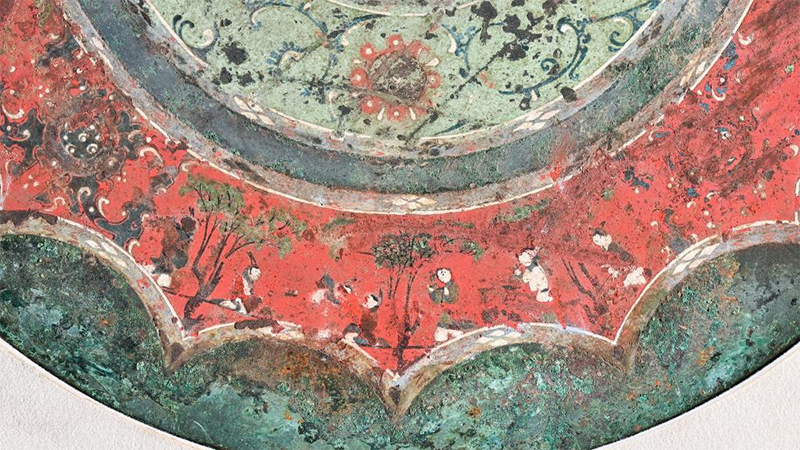Feature: Former COVID hospital in Hong Kong transformed to ramp up radiology services
HONG KONG, Nov. 19 (Xinhua) -- The Central Government-Aided Emergency Hospital in Hong Kong has been offering radiology services since April through a pilot program, which has largely reduced patient's waiting time. It will ramp up its services in December to benefit more people.
The hospital located in the Lok Ma Chau Loop was commissioned for construction by the central government during the COVID-19 epidemic in Hong Kong. It was handed over to the Hong Kong Special Administrative Region (HKSAR) government on Dec. 30, 2022.
As the epidemic situation became stable and the society returned to normal, Hong Kong's Hospital Authority started a new ambulatory service model for the emergency hospital and launched the Ambulatory Diagnostic Radiology Service Pilot Program, which aimed to shorten patients' waiting time and relieve the pressure on radiology services in public hospitals.
"The completion and transformation of the emergency hospital has given us the opportunity to deal with problems such as patients' long waiting time for examinations," Sin Ngai-chuen, clinical stream coordinator of the New Territories East Cluster of the Hospital Authority, said.
Sin said that there were many good facilities in the emergency hospital, and the Hospital Authority can make good use of them to cope with the medical needs of patients.
Now patients can receive diagnostic scans including computed tomography (CT) scan and magnetic resonance imaging (MRI) scan through the pilot program. According to the Hospital Authority, as of Oct. 31, the emergency hospital had served a total of 5,746 cases, including 4,277 computer scan cases and 1,469 MRI scan cases.
"The public response to the pilot scheme has been positive. We estimated that by the end of this year, the CT and MRI examinations altogether can handle about 10,000 cases, far more than our target of 7,000 cases estimated earlier this year," Paul Lee, chairman of the Coordinating Committee in Radiology of the Hospital Authority, said, adding that he expected the number to reach about 13,000 by March 31, 2024.
Lee said that starting from December, the emergency hospital will enhance its radiology services and launch the contrast-enhanced ultrasound service.
"I'm so happy that I can do the scan today," a local resident, who identified herself as Mak, told Xinhua with excitement.
Mak has been suffering from sciatica for years and was treated at Queen Elizabeth Hospital in Kowloon. Recently, her back pain has worsened, and her doctor suggested that she undergo an MRI examination, but an appointment was made for her in 2025.
Resources of public hospitals in Hong Kong are so tight that some non-urgent cases like Mak often have to wait for a long time before they have the opportunity to receive examinations. Mak is one of the beneficiaries of the pilot program that helped to alleviate this situation.
Lee said that the median waiting time for a CT scan in public hospitals in Hong Kong is generally over 120 weeks. After patients joined the pilot program, the waiting time was reduced to 38 weeks, while the waiting time for MRI scan has been cut from over 120 weeks to 50 weeks.
The program, which was voluntary, was implemented initially mainly in public hospitals in the New Territories. Due to the positive response from the public, it has been extended to cover patients in all public hospitals in Hong Kong. The service targeted non-hospitalized patients aged between 12 and 80, who are non-emergency cases in stable condition and with normal mobility.
Another patient, who was only named Kan, 63, was previously treated at the Queen Mary Hospital in Hong Kong Island. He needed regular computer scanning and the next examination was scheduled in 2027. He was recently invited to participate in the pilot program to do the scanning at the emergency hospital.
"If there are any changes in the condition, you can have them treated early, which is good for patients," Kan said.
Edward Leung, a member of the Legislative Council of China's HKSAR, has been devoted to Hong Kong's healthcare development.
He said that the ambulatory service model launched by the Hospital Authority at the emergency hospital can help to reduce the risk of cross-transmission of infectious diseases and relieve pressure on public hospitals, which is worth further promotion.
Photos
Related Stories
- Hong Kong Hang Seng Index closes 3.92 pct higher
- China's Greater Bay Area emerges as promising growth engine
- Driving northward to Guangdong trends among Hong Kong, Macao residents
- Hong Kong's financial system sound with no capital outflow: HKMA chief executive
- 399 candidates valid to run in HKSAR's District Council Ordinary Election
Copyright © 2023 People's Daily Online. All Rights Reserved.









